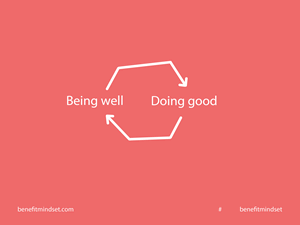 Sleep, nutrition & exercise are the 3 pillars of good health in adolescence. When these are optimal, teenagers are protected from multiple physical & mental health problems. Resilient & good quality sleep are important protectors against mood & learning problems, that typically amplify in the face of acute stress, and worsen through high school years.
Sleep, nutrition & exercise are the 3 pillars of good health in adolescence. When these are optimal, teenagers are protected from multiple physical & mental health problems. Resilient & good quality sleep are important protectors against mood & learning problems, that typically amplify in the face of acute stress, and worsen through high school years.
Despite 70% of our teenagers being sleep deprived, this problem goes largely unrecognised, and therefore uncorrected. Parents, educators, & medics all have important roles in creating good sleep health.
Most sleepy teens never get to the doctor for medical treatment. Some are mislabelled as depressed or anxious, and are seen by psychologists, who often neglect to treat the underlying sleep problem. Parents may naively think that because their teen is in the bedroom at night they are sleeping, & others that do detect a sleep problem are not empowered to fix it. So educators are, in fact, the best placed people to address this issue initially, as they see daily, in the classroom, sleepy kids who are moody, disengaged, unmotivated and are missing out on huge chunks of their learning potential.
Below is a solution pathway for educators to follow when they recognise a tired teen in their classroom
Talking to the student about their sleep is not often fruitful, & typically does not create a solution. Sleep deprivation is normalised by teenagers, so responses such as “why do you care?”, “it’s none of your business” and so on are likely responses. However bringing up the issue enables the next step
The first useful step then is to bring the subject up with a parent. Approach it from the perspective of what is happening in the classroom, how learning potential & moods may be compromised, & how you then wondered whether sleep is OK, as he/she seems often tired. This hopefully will trigger parents into action.
Parents however may not know too much about their teenager’s sleep. Research shows that parents typically overestimate their teen’s sleep & under estimate sleep deprivation.
The second step in the solution pathway is to bring up in conversation the two “red flags” for bad sleep. These are, first, significant difficulties getting out of bed on school days, and, second, big weekend sleep ins. The presence of either of these confirms a sleep problem, and their absence reassures that sleep is not the issue. Talking about the specific number of hours of sleep is not particularly helpful in this setting.
If a problem is confirmed, parents may be interested to know that they can acquire further information via Sleep Shack (sleepshack.com.au), which is an online resource providing relevant information at the front end, and a formal individualised treatment program at the back end, if needed. A short explanation video on Sleep Shack’s homepage is worth viewing.
Simply talking about sleep is also very helpful, as it begins to engage teens & empowers their parents to open the discussion about some initial simple steps to improve sleep. At this stage, as an educator, you can pull back, and the family takes over sleep management. Sleep Shack’s information aims to encourage families to make some simple, initial changes in pre sleep & sleep behaviour. These include setting a sensible weeknight bedtime (aiming for 8-9 hours of sleep), having a pre bed routine, and abolishing late night electronic screen exposure. Evenings need to be organised in a way that allows for adequate sleep hours. This means that school work, relaxing & social activities need to be completed at least 45 minutes prior to bedtime. Over 90% of sleep issues will resolve if these strategies are implemented. The flow on effect should be noticed in the classroom, with improvements in engagement, motivation, memory retention, and moods, and a reduction in lateness and absenteeism. Positive feedback to families from educators at this point is important and this ensures good sleep health continues.
The 5% of students who fail to improve at this point require more formal assessment and treatment, on a professional level. In particular, investigation for a late body clock (Delayed Sleep Phase Disorder), screen addiction, or low motivation levels is required. In Sydney, at The Woolcock Institute of Medical Research, we have Australia’s only multi-disciplinary adolescent sleep clinic, where sleep physicians, sleep psychologists and others assess and treat teen sleep deprivation. (http://woolcock.org.au/). For those families elsewhere, or for Sydney based adolescents who feel more comfortable in the online environment, Sleep Shack’s treatment program will optimise sleep, as it replicates techniques used in traditional face to face consultation. If families or educators are uncertain how to proceed at any point, queries can be addressed via Sleep Shack’s email facility.
_______________________________________________________________________
Dr Chris Seton is a paediatric and adolescent sleep physician at The Woolcock Institute of Medical Research at Sydney University & Children’s Hospital Westmead in Sydney
________________________________________________________________________
Summary of Key Resources for student sleep health
Woolcock Institute of Medical Research (Woolcock.org.au). Multidisciplinary Sleep Clinic
SleepShack (sleepshack.com.au). Online individualised sleep treatment & sleep health information
The Sleep Connection (thesleepconnection.com.au). Whole of school sleep education & Sleep health information


